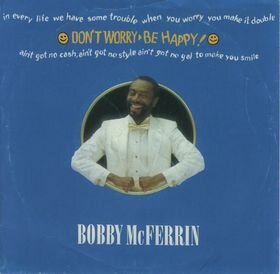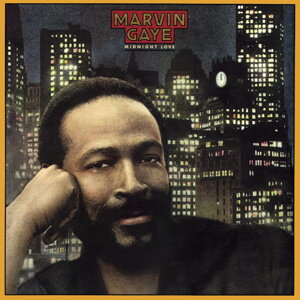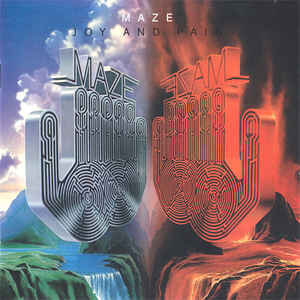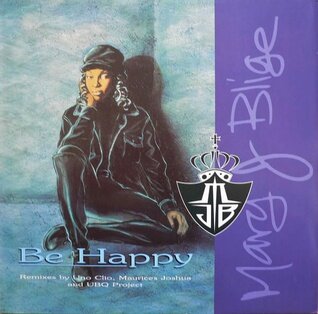by Zine Magubane
Don't Worry, Be Happy
--Bobby McFerrin (1988)
The Joy Inside My Tears
--Stevie Wonder (1976)
Joy in Popular Culture
Popular music, especially the kind that is on near round-the-clock rotation on stations whose call numbers are invariably preceded by words like "Hot," "Jammin," or "Power" (Hot 96.9 or Jammin' 94.5 in Boston, Power 105.1 in NYC) is not usually the place we look for insight concerning the subtle, or not-so-subtle, distinctions Americans draw between "joy" and "happiness." Nevertheless, it turns out to be instructive when we try.
Bobby McFerrin explicitly identifies "happiness" with the absence of worry:
Here's a little song I wrote
You might want to sing it note for note
Don't worry. Be Happy
In every life we have some trouble
But when you worry you make it double
Don't worry. Be Happy.
Mary J. Blige, in a similar vein, ties happiness to the absence of worry in her 1994 chart-topping hit, "Be Happy":
All I really want is to be happy
(I don't want to have to worry about nothin' no more)
And to find a love that's mine
It would be so sweet.
Pherell describes happiness as having a mind so utterly untethered to the mundane worries of everyday life that consciousness is experienced as a "room without a roof":
Because I'm happy
Clap along if you feel like a room without a roof
Because I'm happy
Clap along if you feel that happiness is the truth.
Contrast this with how artists like Stevie Wonder, Frankie Beverly, and Marvin Gay sing about "joy." All three artists are explicit about pairing joy with tears, sadness, and pain. Wonder, singing about a lost love, is able to find "joy inside [his] tears." Gay marvels at the "joy of a crying baby" while Beverly asserts that not only are joy and pain as inextricably linked as "sunshine and rain" but, crucially, that it is inevitable that the things that make us happy will ultimately bring about sadness as well. Unlike Blige, who prophesizes that finding love will, inevitably, bring about happiness, Beverly speculates that finding love inevitably means confronting sadness:
Remember how when you first found love, how you felt so good
The kind that last forevermore (or you thought it would)
Suddenly the things you see got you hurt so bad
How come the things that make us happy, make us sad?
It seems to me that
Joy and pain are like sunshine and rain.
We can find the opposed perspectives offered by Beverly and Blige on love, happiness, sadness and the sublime (or what Blige terms the "sweetness"---and completeness---of finding true love) echoed in the distinctions between joy and happiness offered by "experts"---both in the academy and in the fields of "popular" psychology or "self-help." When Blige equates happiness with the comfort and absence of distress, she echoes a way of defining happiness that has a long and complex intellectual history.
The "Scholarly Mixtape" on Joy and Happiness
A handful of universities, most notably Yale, offer courses on "Happiness." The course, formally titled 'The Science of Well Being," advertises itself as offering students lessons on how to "increase [their] own happiness and build more productive habits." It is the most popular course ever offered in Yale's three centuries-long history. No one, as far as I can tell, who teaches at any institution of higher education is offering formal instruction on how to achieve "joy." Each year a well-known economic think tank produces a list of "the world's happiest nations." No comparable index exists to rank the "most joyful."
Popular psychology aimed at self-improvement is yet another arena of American life informed by the "joy" vs. "happiness" distinction. The verbs and adjectives that so often precede "joy" in popular psychology and self-help are illuminating. The two most common now being "steal" and "spark." The "self-help" sages of Etsy frequently post virtual equivalents of the mass-market folksy wooden signs that overflow the home-goods aisles of Marshalls, T.J. Maxx, and Target. The posts admonish us not to let anyone "steal" our joy. Joy is not only elusive and fleeting, it appears, but also vulnerable to theft. The most common thief of joy is the devil (betraying the eschatological roots of the notion that joy can be stolen). Other culprits are the seven-deadly-sin-adjacent emotions of "jealousy" and "comparison."
The other verb frequently paired with joy is "spark." Marie Kondo, author of the best-selling book Spark Joy: An Illustrated Master Class on the Art of Organizing and Tidying Up and the patron saint of clearing clutter has made joy central to her trade-marked (KonMari™) method of clearing clutter and getting organized. Rule number 6 instructs her disciples to touch objects to determine if they "spark joy." Only objects that do are to be kept. Kondo is adamant that only a particular individual can determine whether an item "sparks joy" and further specifies that this feeling never follows market logic. Appetites, Emile Durkheim reminds us, are "not controlled by public opinion."1 In fact, appetite might very well resist public opinion. A cabinet full of Waterford crystal may inspire nothing more than a feeling of "meh" while a stained and crumpled concert program or piece of sea-glass may spark, in the individual who touches it, the ever-so-elusive emotion.
In the KonMari™ method, your feelings are the standard for decision making---specifically, knowing what sparks joy. To determine this when tidying, the key is to pick up each object one at a time, and ask yourself quietly, "Does this spark joy?" Pay attention to how your body responds. Joy is personal, so everyone will experience it differently. Marie describes it as a little thrill, as if the cells in your body are slowly rising.
Having too much "stuff," or what Americans call "clutter," is now definitively recognized as one of the key mechanisms for zapping joy. Joseph Ferrari, an expert on the impact of clutter on "well-being," notes that having too many possessions scattered about and visible has a notable and negative effect. It increases the "bad stress" hormone cortisol and leads to general feelings of sadness and dissatisfaction. Clutter, the New York Times concludes, fills individuals' lives with "unbearable heaviness." Kondo has recently launched a line of storage boxes available exclusively at the Container Store.
The scholarly distinction between "happiness" and "joy" is strongly linked to consumption and stretches back to one of the founders of sociology, Emile Durkheim. His nineteenth-century study Suicide undertook the task of making happiness, hitherto a confoundingly ephemeral state of being, "subject to computation."2 Where, he asked, should the scholar begin? Was it possible to "determine the quantity of well-being, comfort, or luxury legitimately to be craved [italics mine] by a human being?" By centering on the notion of craving,Durkheim both anticipates and underscores the "joy"/"happiness" distinction that Beverly and Blige sing about. Our "capacity for feeling," Durkheim laments, is "in itself an insatiable and bottomless abyss." And if there was nothing available to "restrain" this capacity for feeling, the desire for happiness would, itself, "become a source of torment." 3 For Blige, once the craving for love is satisfied, happiness ensues. For Beverly, to resolve one's craving is nothing more than a temporary stasis, followed by disappointment and yet more craving.
In 1897 Durkheim undertook the unenviable task of trying not only to define what happiness was, but also to measure it. In so doing, he provided the scholarly scaffolding for the presence or absence of "suffering" as being crucial not only to drawing a line between "happiness" and "unhappiness" but also between "happiness" and "joy."
In Suicide, Durkheim sought to do what no one had done before---to study unhappiness and self-harm from a social rather than individual or psychological point of view. Just as would later be done in the Yale course, he explicitly linked happiness with "well-being" and defined both states as, above all, characterized by tranquility and equilibrium. In fact, he surmised that feeling too happy---letting oneself get lost in irrational exuberance---was precisely what led to suicide. In other words, suicide was not, ultimately, the end-result of excessive sadness. Rather, it was the result of too jarring an extreme in emotion---dizzying highs followed by despairing lows. Suicide rates, his study even showed, were sometimes higher in times of prosperity if that prosperity had inaugurated or been precipitated by disequilibrium or social disturbances. As he put it:
Every disturbance of equilibrium, even though it achieves greater comfort and a heightening of general vitality, is an impulse to voluntary death.4
The countries that score high on the "happiness index" are the Nordic nations. They are distinguished by relatively low levels of inequality and a tranquility (economists call it "well- being") resulting from the reduced stress and anxiety citizens experience when necessities like schools, hospitals, and daycare are well run, robustly financed, and publicly provided. Happiness can be quantified, it turns out, because it readily elides with "well-being" and "well-being" is strongly tied to a lack of suffering or, as McFerrin says, lack of worry. It is fairly easy to enumerate the things that make us worry: the lack of the things we need to reproduce ourselves in our humanity---food, clothing, education, shelter. The comedian Paul Reiser quips, "Money can't buy happiness, but lack of money can buy unhappiness." So, while money cannot "buy" happiness, it does buy "the essential elements of well-being" that prevent suffering. Yet Durkheim was aware that even the essential elements of well-being provided an unstable anchor for happiness because "the more one has, the more one wants, since satisfactions received only stimulate instead of filling needs." The key, he thought, was to "limit passions," for "only then can they be "harmonized with the faculties and satisfied."5
The words "passions" and "appetites" appear often in Durkheim's text. Although he does not say so explicitly, the ways in which he defines them gesture towards an incipient argument about the differences between happiness and joy. Passions and appetites are, above all, marked by how difficult they are to regulate, satisfy, and constrain. The appetites are the source of our passions, while our passions are the handmaiden of our desires. And desires are infinite. As Durkheim puts it, "[F]ugitive joys, even though constantly renewed, can never quiet their unrest."6 He also notes that "it is wrong to believe that unmixed joy is the normal state of sensibility. Man could not live if he were entirely impervious to sadness. Many sorrows can be endured only by being embraced, and the pleasure taken in them naturally has a somewhat melancholy character."7 The embracing of sorrow and the pleasure that can be taken therein brings us right back to Beverly, Wonder, and the "joy" inside our tears.
The "Politics" of Joy
The Declaration of Independence seems to link political praxis, property, and happiness when it declares, as a self-evident truth, the right of all men to "life, liberty and the pursuit of happiness." Ostensibly, life and liberty were the pre-conditions, guaranteed through the mechanism of democratic politics, that would enable, at least, the pursuit of happiness. The political process itself, however, was always understood to be made up largely of back-room deals, jockeying for position, and unpleasant---if necessary---compromise. In other words, there was nothing resembling happiness or joy in the real practice of politics. Although politicians often frequently build their platforms on promises that they will do the things that make the world such that their constituents can go about the business of pursuing happiness, the pursuit of politics is itself commonly understood as the "thief" of joy.
Our focus is on a politics of joy. pic.twitter.com/bju4OMUySM
— Rep. Ilhan Omar (@Ilhan) July 25, 2021
The recent promise by representative Ilhan Omar to "make politics a vehicle for bringing joy into people's lives" may mark a subtle but important shift. Omar foregrounds shared struggle---the act of "doing politics"---as a potential source of joy for ordinary people. She suggests that, although achieving "wins" is always the goal, "joy" might be found in the process of struggle itself and might yield its own rewards independently from the success of enacting any particular piece of legislation. Omar's decision to highlight "joy" speaks, I think, to the strength of the vested interests that are united in opposition to her. Fighting for the things that she fights for on behalf of the constituents that she represents will, inevitably, be marked by far more losses than victories. Participating in such a campaign is not likely to enhance feelings of well-being. It nevertheless has the potential, Omar is suggesting, to produce joy precisely because it repudiates not just market logics but also any standardized metrics of "winning" and "losing." Joy, both Omar and Stevie Wonder remind us, can exist inside of tears.
Joy defies a simple accounting of the affect's losses and gains. Joy sits comfortably with suffering. It does not need suffering to be eradicated or relieved in order to exist. Take, for example, countries that rank both lowest and highest on the "happiness index." One would be hard pressed to imagine that a resident of war-torn Afghanistan, civil-war plagued Syria, or poverty-stricken Lesotho can easily achieve well-being. Not only are the objective conditions---safety, security, resources---unavailable, they are, oftentimes, far beyond individual control. Rationed by the market, controlled by greedy rentiers, all resources of life and livelihood are rendered scarce. Joy permits the habitation of other dimensions. We are equally hard-pressed to say with certainty that joy is unattainable by everyone in such societies---even at all times. We are unable to say with certainty whether anyone outside ourselves will or will not experience joy precisely because it cannot be quantified. It is unattached to material objects or material states of being in the way happiness is.
If joy is so elusive, how do we know that it is there? In The Souls of Black Folk, W.E.B. Du Bois devoted an entire chapter to "sorrow song"'---the spirituals that were the unique creation of enslaved persons. They were sung by those who were not only denied the "pursuit of happiness" but who knew that their stolen lives and labor produced the well-being of the Declaration's illustrious authors. The life of a slave was not a happy one, yet Du Bois identified stirrings of joy within the songs the enslaved created. Indeed, the very process of their creation, he surmised, constituted systematic attempts to "steal" moments of joy amidst immense suffering.
Among those countries ranked lowest on the "happiness index," there is not a single one that has not produced art, music, and unbounded creative expression. There is not a single country where people have simply stopped the business of living. There are children born, funerals celebrated, marriages conducted, songs sung, paintings painted, jokes told, and all the rest. The joy of meaning is surely enhanced when it is produced from suffering and sorrow.
An adage states that "comparison is the thief of joy." Joy is deeply individual because it is incommensurable. It does not admit measure or contradiction. It is inextricably tied to the trials and tribulations of the innumerable and immeasurable particularities of individual lives. It is inextricably tied to the joyful chaos of it all.
1 Emile Durkheim [1878] 1930. Suicide: A Study in Sociology. New York: Free Press, p. 213.
2 Durkheim, Suicide, p. 207.
3 Durkheim, Suicide, p. 208 [emphasis mine].
4 Durkheim, Suicide, p. 206.
5 Durkheim, Suicide, p.209.
6 Durkheim, Suicide, p. 252.
7 Durkheim, Suicide, p. 333.





